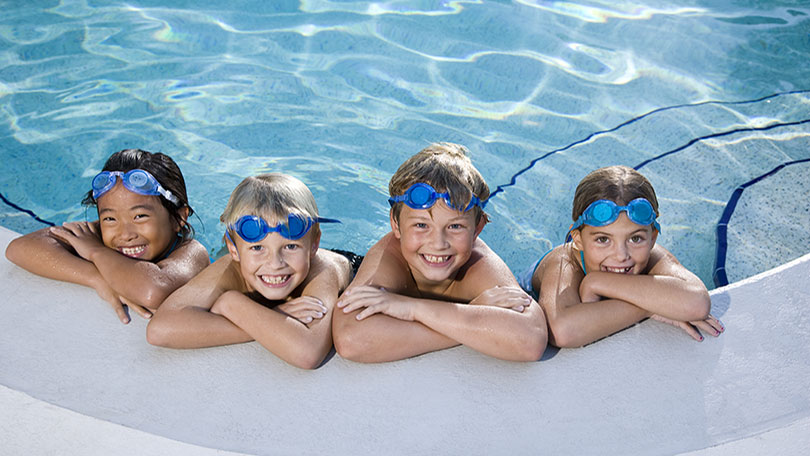
The Core Aquatic Skills of swimming
10/09/2018 ParentsThe Core Aquatic Skills of swimming are the basic skills your child needs to keep afloat in water and to get ready to start swimming.
At Swim England we feel the best way for children to develop the core aquatic skills of swimming is to practise them in a fun way.
Children develop their movement skills at different ages. For girls it is between five and eight years, and for boys it is between six and nine.
This stage is very important for them to ‘grow up’. This is why they need to do activities from an early age which focus on helping them to develop.
All basic movement skills are very important and a lot of them rely on each other to be successful. For example, if your child isn’t happy having water on and around their face, streamlining, rotating and even keeping afloat may be an issue.
The Core Aquatic Skills of swimming and their animal guides
Below you’ll find a list of the Core Aquatic Skills of swimming. They’re represented by an animal character, and you can find them in our special children’s story books for the Pre-School Framework.
Open the picture gallery to see all the characters.
- Entry (Edward the Elephant) When learning to swim, your child needs to know how to get in safely. This includes use of the steps, the side, jumps and eventually dives.
- Exits (Pip the Polar Bear) Learning safe ways to climb out of the water is also very important, including use of steps and the side of the pool.
- Buoyancy and Balance (Piper the Penguin) Discovering about buoyancy and balance, how to float and what can affect it and how to be buoyant in the water.
- Rotation and Orientation (Orla the Otter) Such as how to turn around, lie back, lie forward, regain an upright position and twist from the back to the front and vice versa. Being able to turn in the water will help your child to breathe, change direction and travel.
- Streamlining (Daniel the Dolphin) Understanding of how move smoothly through the water, how to be streamlined and why it’s important.
- Aquatic Breathing (Haley the Hippo) Your child needs to be happy with putting their face in the water and blowing bubbles. They will learn to be at ease with water around their face and learn how to breathe correctly.
- Travel and Coordination (Skipper the Sea Lion) Developing movement forwards, backwards, sideways, how to travel effectively, exploring different ways of travelling in the water.
- Water Safety (Charlie the Crab) Developing a basic understanding of how to say safe in and around water.
- Health and Fitness (Discovery Duckling) Developing an understanding of why swimming is good for you and the importance of being fit and healthy.
 Learn to Swim
Learn to Swim








